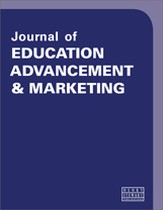Engineering warm fuzzies: Applying user design principles to create philanthropic experiences — part two: giving websites
Abstract
As we have moved firmly into the 21st century and as our society and its expectations are continuously evolving, so must our higher education advancement practices. Rather than asking, ‘How do we want alumni and donors to engage with our universities?’, we must ask, ‘How are these individuals already intuitively engaging the world?’ Instead of falling into the trap of thinking, ‘What are global best practices in higher education advancement?’, we should be asking, ‘Which global companies are curious and responsive in their interaction with humans, and what can we learn from them?’ In answering these questions, this paper tests a human-centred solicitation approach via three primary channels: mail, phone and e-mail. For each channel, multiple tests are performed and the principles and tools of human-centred design and user experience are implemented, including ethnographic interviews, user personas and A/B testing. The results of these tests lead to the recommendation of a user-centred approach to philanthropic interactions that is constantly testing and evolving practices. Now more than ever, consciously building and testing systems centred around removing obstacles impeding giving defines the work of the modern advancement professional.
The full article is available to subscribers to the journal.
Author's Biography
Christy Moss serves as the Senior Director of Strategic Engagement at the University of Illinois. In her role, Christy oversees the areas of annual giving and data analytics. Her advancement career spans over 15 years in a broad range of experiences from annual giving and data analytics to stewardship, marketing and personal solicitations.
